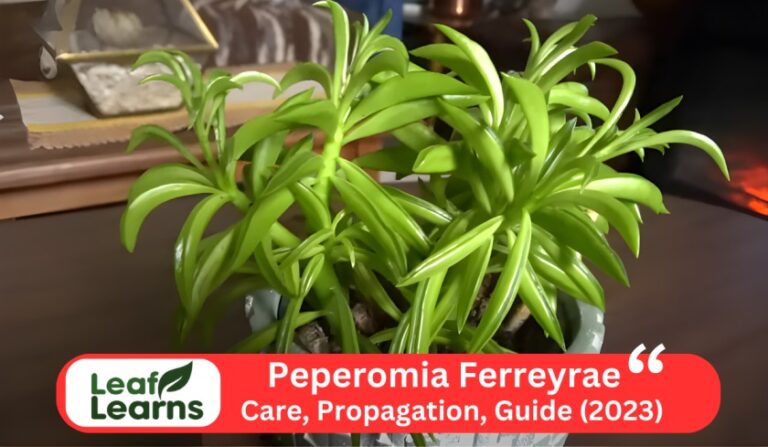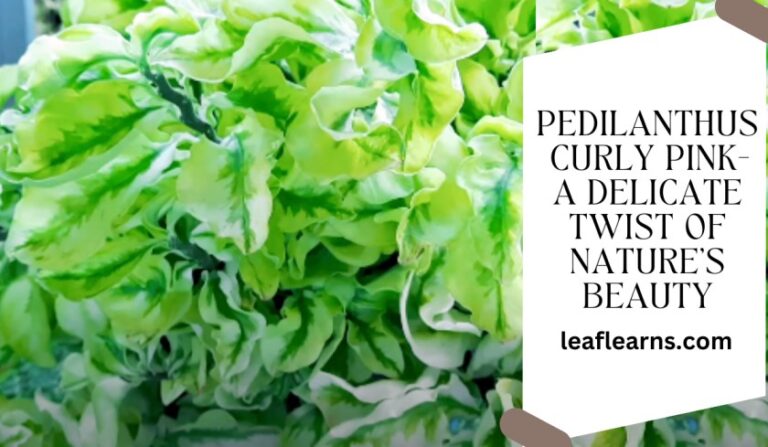Anthurium Warocqueanum ‘Queen Anthurium’ Care and Grow (2023)
Ever seen a plant with large, velvety leaves that made you feel like royalty? You may have encountered Anthurium warocqueanum, also known as the Queen Anthurium. Leaf size can reach up to four feet on this majestic member of the Araceae family, displaying a lush, vibrant green that glistens in the light.

For centuries, the Queen Anthurium has captured hearts in Colombian rainforests. A botanical garden and private collection have housed specimens for generations. Plant enthusiasts worldwide are enthralled by this houseplant, which thrives in temperate zones.
| Common Name | Queen Anthurium |
| Scientific Name | Anthurium Warocqueanum |
| Family | Araceae |
| Origin | Colombia |
| Plant Type | Epiphytic perennial |
| Size | Up to 3 feet in height |
| Lifespan | Perennial |
| Leaf Colour | Dark green with prominent veins |
| Leaf Size | Large, heart-shaped |
| Flower | Inflorescence with a dark maroon, velvet-like spathe and a long, slender spadix |
| Light | Bright, indirect light |
| Water | Keep soil consistently moist, but not waterlogged |
| Soil | Well-draining, aerated soil with organic matter |
| Temperature | 65°F to 80°F (18°C to 27°C) |
| Humidity | High humidity, 60% or above |
| USDA Zone | Zones 11 and above |
| Fertilizer | Balanced liquid fertilizer every 4-6 weeks during the growing season |
| Propagation | Division, stem cuttings |
| Pruning | Remove yellow or damaged leaves |
| Pests | Susceptible to aphids, mealybugs, and scale insects |
| Toxicity | Mildly toxic, can cause irritation if ingested |
| Uses | Ornamental plant, indoor decor, tropical gardens |
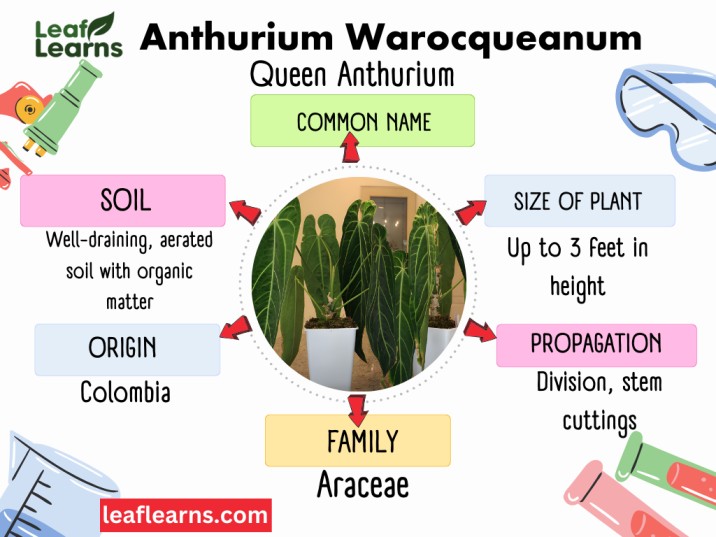
However, the Queen Anthurium’s allure goes beyond its surface. The velvet-like leaves are not only beautiful, but they also filter air extremely well, making it an ideal plant for any indoor space. Whether you’re new to plant collecting or an experienced enthusiast, the Queen Anthurium is sure to bring a sense of elegance and serenity to your home.
Contents
- 1 Where can I find an anthurium-warocqueanum?
- 2 What’s Unique About Anthurium Warocqueanum?
- 3 Top Care Tips
- 4 Care for Anthurium Warocqueanum
- 5 How to Propagating Anthurium Warocqueanum
- 6 Pruning
- 7 Repotting
- 8 Growth and Size
- 9 Foliage
- 10 Flowers
- 11 Blooming
- 12 Appearance and Fragrance
- 13 Underwatering And Overwatering
- 14 Overwintering
- 15 Why is my anthurium warocqueanum yellow?
- 16 Common Pests and Diseases
- 17 Problems and Solutions
- 18 Toxicity
- 19 Varieties/Types
- 20 Uses
- 21 Cultivation Essentials: Nurturing Queen Anthurium
- 22 Global Market and Varietal Allure: Buying and Collecting Anthurium Warocqueanum
- 23 FAQs
Where can I find an anthurium-warocqueanum?
Queen Anthuriums are coveted by plant enthusiasts for their velvety, heart-shaped leaves and elegant silhouette. It can be challenging to find one. Here’s a guide to help you see its beauty:
Origin
From Colombia’s lush rainforests comes the Queen Anthurium. Epiphytes thrive in humid environments with dappled sunlight.
Where to Look
- The internet is home to several online retailers that specialize in rare plants, such as Queen Anthuriums. Amazon Marketplace and Etsy are good places to start.
- The Queen Anthurium might be available at some nurseries that specialize in exotic plants. Inquiring about availability ahead of time is always a good idea.
- A plant show or fair is an excellent place to meet other plant collectors and potentially find a Queen Anthurium. Plant shows are held throughout the year by many gardening clubs and organizations.
- You might be lucky enough to find someone willing to share or sell a Queen Anthurium when you search for a private collector. These plants are highly sought after, so make sure you offer a fair price.
What’s Unique About Anthurium Warocqueanum?
A magnificent canopy of foliage: Imagine long, velvety-green leaves that reach 3-4 feet in length, cascading gracefully into the ground below. An air of elegance and sophistication is added by their thick, leathery texture and contrast silver veining.
This rare and dramatic plant is highly coveted among collectors thanks to its rarity and dramatic presence. You can turn your home into a botanical oasis with its ability to dominate and brighten up any space.
Located in the Araceae family, this member provides an alternative to the popular Monstera. With its distinctive appearance and slow growth, it is sure to spark conversation and be a treasure for anyone who is into plants.
Top Care Tips
For vibrant blooms and healthy foliage, it needs bright, indirect sunlight.
- Make sure the top half of the soil is dry between waterings to prevent soggy roots.
- The humidity should be high (70%+) to mimic the rainforest environment.
- An orchid bark mix, pumice, and chunky perlite soil provide a well-draining environment.
- Spring and summer are the best times to fertilize with a balanced liquid fertilizer.
- It is important to remove spent blooms and leaves so that new growth can occur.
- Watch for pests and diseases on houseplants and treat them immediately if they occur.
Care for Anthurium Warocqueanum
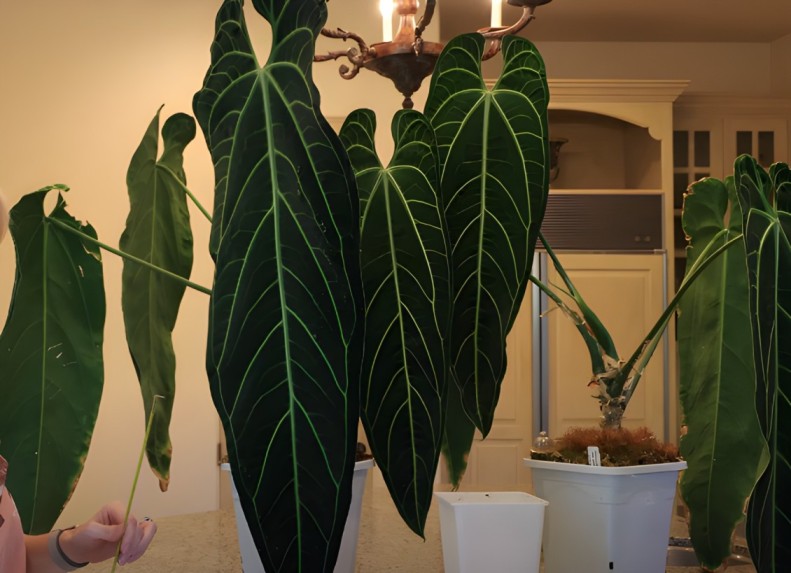
How much light does a queen anthurium need?
Bright, indirect light is necessary for the majestic Queen Anthurium. You want about 10,000-20,000 lux, which is similar to the brightness of a sunny window.
It is important to remember that the intensity of the sun varies throughout the year. You can avoid scorching in summer by providing sheer curtains or by adjusting placement.
To maintain optimal brightness, grow lights may need to be supplemented in winter. For even growth, rotate your queen in spring and fall to maintain naturally balanced light levels.
Height matters! There is more light required for taller Warocqueanums than for shorter ones. Make sure the light is adjusted according to the signs of stress on your plant, such as leaf burn or leggy growth.
Water Requirements
In addition to providing consistent yet moderate watering Queen Anthurium.” This plant prefers its soil to be slightly moist, but never drenched.
A deep watering is recommended during the summer when the soil feels dry at the top inch. Make sure the water is thoroughly soaked, allowing excess water to drain. Based on your environment, you may need to repeat this process every 7-10 days.
During the winter, your queen requires fewer drinks as the temperature cools. Make sure the top 2 inches of soil have completely dried between waterings. It could take as little as 2-3 weeks to complete this task.
The transitional seasons of spring and fall call for gentle adjustments to watering. The top 1-1.5 inches of soil should be watered deeply once a year, probably every 10-14 days.
Special Considerations
- Watering is more frequent in smaller pots and pots made of terra cotta because they dry out faster.
- Watering may need to be done more frequently in bright light because water evaporates faster in bright light.
- Moisture is retained in the soil when humidity is high, so regular watering is less required.
Tall Tales
Despite its ability to grow quite large, the Queen Anthurium has similar watering needs regardless of size. The amount of water needed to fill the pot can simply be adjusted based on its size.
Soil Requirement
Ah, the Queen Anthurium. It is only fitting that her regal beauty should be paired with the finest soil. It must retain moisture like a loyal servant, and be well-draining, airy, and well-cut.
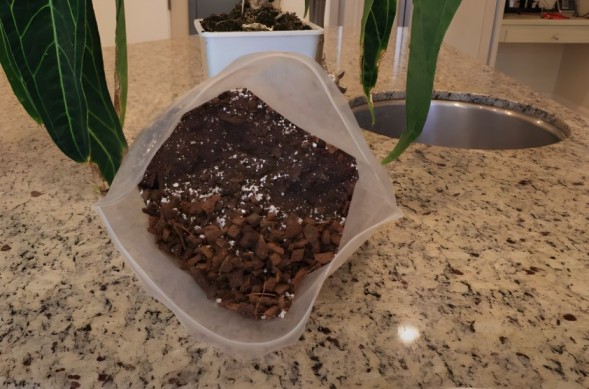
In summer, let the soil dry slightly between waterings, while in winter, let it almost completely dry between waterings. A refreshing drink can be enjoyed during spring and fall, when the soil has had time to dry moderately.
The pH level of her ideal court should be between 6.6 and 7.5, regardless of the season.
As long as you follow these simple instructions, your Queen Anthurium will stand tall and proud, reaching heights of up to 6 feet, its vibrant leaves and stunning blooms bearing witness to the dedication you put into its upkeep.
Ideally, you should use a mix that drains well; at least 50% pumice and/or orchid bark, with the rest being a high quality houseplant soil.
Temperature Requirement
This plant has specific temperature preferences, just like royalty.
During the summer, keep the temperature between 75°F and 85°F (24°C and 29°C) to mimic a warm palace. Heat above 100 degrees Fahrenheit (38 degrees Celsius) should be avoided.
It is best not to let the Queen shiver, even though she is capable of tolerating cooler temperatures than other Anthuriums! Ensure that the temperature is at least 60°F (16°C).
A gradual adjustment of the temperature to match the change in seasons is essential during the spring and fall. The temperature should be between 65 and 75 degrees Fahrenheit (18 and 24 degrees Celsius).
Remember, consistency is key! Stressing your plant and stunting its growth can result from sudden temperature changes.
Humidity Requirement
Want to ensure that your Queen Anthurium has the right humidity? Think rainforest! Moisture-rich air mimics its native Colombian habitat, which is the ideal environment for this tropical beauty.
For lush, velvety foliage, make sure the humidity is 70% or higher throughout the year.
For vibrant blooms and optimal growth, bump it up to 80% in spring and summer.
Keep leaf temperatures below 60% in the fall and winter to prevent browning and crisping.
Fertilizer Requirement
A balanced diet is just as important to plants as it is to us. There is no exception to this rule when it comes to the Queen Anthurium, with its velvety leaves and vibrant blooms. Nevertheless, fertilizer should be applied sparingly.
You need to keep an eye on your queen because she is very hungry during these months of summer sunshine and growth spurt! Make sure she receives a balanced liquid fertilizer every 2-3 weeks, diluted to 1/4 strength.
She will be able to grow more quickly and keep those beautiful leaves glossy and green for a longer period of time.
During the winter, your Anthurium goes into dormancy when the days shorten and temperatures drop. Use a weak solution and fertilize once every four to six weeks. Take care of her and let her rest so that she can be ready for the next growing season.
Your Queen awakens from her slumber with spring’s awakening, renewal, and rejuvenation. The frequency of fertilization can be gradually increased to every 3-4 weeks, if a balanced formula or a slightly nitrogen-rich formula is used. She will be encouraged to develop stunning blooms as a result of this fresh growth.
Keep your plants beautiful during autumn with a balanced fertilizer, gradually reducing its concentration as temperatures drop. Fertilize every 3-4 weeks after the summer’s heat fades. As a result, your Queen will remain beautiful throughout the fall and be ready for winter’s rest.
Potting Requirement
Besides soil that drains well, Anthurium-Warocqueanum also needs moisture-retaining conditions in order to thrive. She, however, requires different things at different times of the year.
Sphagnum moss and coco coir are incorporated into her mix in summer for retaining moisture like a sponge.
Perlite and orchid bark are used for a well-draining blend to prevent roots from being damaged by winter chills. A balanced approach is required both in spring and fall, to ensure that the soil holds enough moisture for growth but drains readily to prevent root rot.
Whatever the season, remember: a high pot will allow your Queen to reach her majestic full height while accommodating her extensive root system.
You can watch your Queen’s vibrant foliage and gorgeous blooms all year long with the right pot and understanding her seasonal needs.
How to Propagating Anthurium Warocqueanum
It will prepare you for success in multiplying your queens and creating a flourishing kingdom of anthuriums!
When to Propagate
Young Padawan, be patient. Until your queen is mature, she cannot offer up her offspring. If you intend to propagate your plant, wait until it has at least 3-5 leaves before attempting to do so. Plants are considered to be most successful during early spring, when they are actively growing.
The Two Paths to Propagation:
Offshoots (Keikis)
The easiest way to propagate your Queen is to find little plantlets attached to the mother plant. Here’s how:
- The following resources should be gathered: a sterilized blade, a container with drainage holes, a well-draining mix (e.g., orchid bark mix mixed with perlite), and sphagnum moss (optional).
- Offshoots should be separated from the mother plant gently using the blade, ensuring they have healthy roots.
- As soon as the baby Queen is ready to be potted, place it in the prepared pot, and cover the roots as much as possible. You can add additional support to the base by using sphagnum moss (optional).
- A warm, humid environment (e.g., terrarium) is needed to moisturize the soil and provide warmth.
- You should be patient: It can take weeks for the roots to establish themselves. As soon as your baby Queen grows new growth, it will be ready to thrive on its own!
Stem Cuttings
Multiple propagations are possible with this method, but it requires a bit more precision. Here’s how:
- Supplies: Sterilized blade, rooting hormone (optional), potting mix with drainage holes, well-draining pot, and sphagnum moss (optional).
- Make sure the stem is healthy and has at least one node (the bump where a leaf meets the stem). A clean cut should be made just below the node using the sterile blade.
- Rooting hormone (optional) is applied to the cut end of the cutting to encourage root development.
- Adding potting mix to the pot and making a hole is the first step in potting the cutting. The cutting should be gently inserted, ensuring that the node is buried. Water thoroughly.
- Keep the soil moist and the pot warm and humid. This method is similar to the offshoot method.
- It may take several weeks for roots to grow. It is a sign of success when the node grows new roots!
Advanced Techniques
Tissue Culture
The use of tissue culture allows for the controlled and efficient propagation of plants on a large scale. An advanced technique for growing plants involves isolating and multiplying the cells in sterile conditions.
Benefits of tissue culture
- Plants are propagated rapidly: Many plants are produced in a short amount of time.
- The plant is disease-free, so there is no risk of spreading disease.
- Uniformity of genes: Ensures that all offspring are genetically identical to their mother.
The equipment and expertise required for tissue culture, however, make it less accessible to hobbyists.
Rapid Propagation Technique
Air layering and sphagnum moss propagation are two popular rapid propagation techniques. It is faster and requires less equipment to use these methods than traditional methods.
Various techniques require different requirements and have different success rates. The most important step is to research and choose a method that suits your skills and resources.
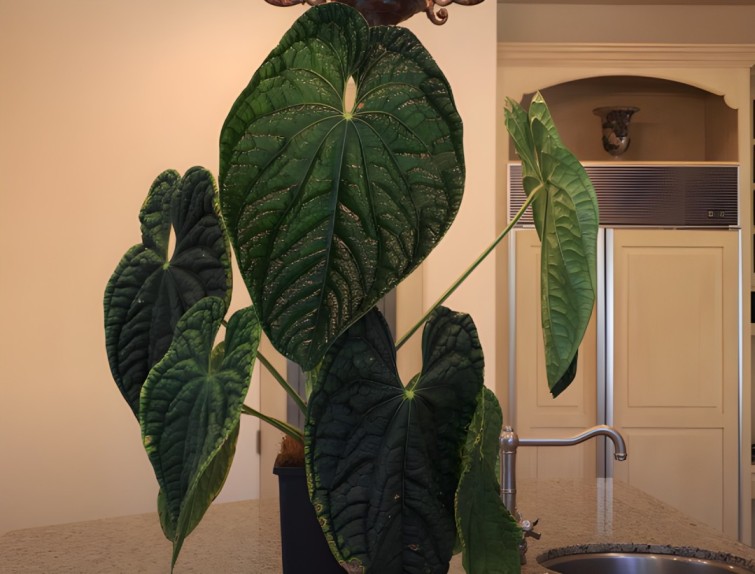
Pruning
- Why: Remove dead, aged, or diseased leaves to encourage new growth and improve air circulation.
- When: Regularly throughout the year, but especially after flowering when the blooms have faded.
- How: Use sterilized shears to make clean cuts at the base of the leaf stem.
- Bonus: Your plant’s size and shape can also be controlled by pruning.
Repotting
- Why: In order to encourage healthy growth, the soil needs to be refreshed, roots need more space, and roots need more space.
- When: Every 2-3 years, or when the top of the plant becomes heavy or roots appear crowded.
- How: Change the pot to one that is only slightly larger, but with good drainage. Make sure your potting mix is well-draining so that aroids can thrive.
- The plant should be gently removed from its old pot, some soil should be brushed away, and then the new potted plant should be placed in the old pot.
- Bonus: Repotting is a good opportunity to check for any pests or diseases.
Pro Tip
- It is important to sterilize your tools before and after pruning in order to prevent the spread of disease.
- After pruning or repotting, give your plant a few weeks to adjust to its new environment before fertilizing.
Growth and Size
Patient plant parents can achieve impressive size with the Queen Anthurium, even though it is not the fastest growing plant. The full potential of one leaf is reached within 2-3 years, when optimal conditions are met.
Queen Anthuriums have a slow and steady growth pattern that adds to their allure. When you possess a mature specimen, it feels like you have acquired a valuable treasure.
The following are some important takeaways regarding Queen Anthurium growth:
- Average leaf size: 3-4 feet
- Maximum leaf size: 6 feet
- Growth rate: One mature leaf per year
- Time to reach mature size: 2-3 years
A mature tree reaches a height of 12-16 inches and spreads about the same. It usually grows slowly to moderately, gaining about two inches a year.
Foliage
- The star of the show! Featuring heart-shaped leaves with prominent veins, this plant has velvety, 8-12 inch leaves.
- According to the lighting conditions, the colors vary from a deep, lush green to a lighter, almost lime-green shade.
- This plant is called Velvet Anthurium because of its soft, fuzzy leaves.
Flowers
- There is a small, cream-colored spadix emerging from a heart-shaped spathe. It is about 2 inches long.
- Reddish-orange is the typical color of the spathe, although salmon, scarlet, and other colors are also possible.
- There is a subtle, sweet scent to the flowers, although they are not intensely fragrant.
Blooming
- Although flowers bloom throughout the year, spring and summer are usually the best times to see them.
- There are many flowers to choose from, and they can last for a few weeks, adding a splash of color to the lush foliage.
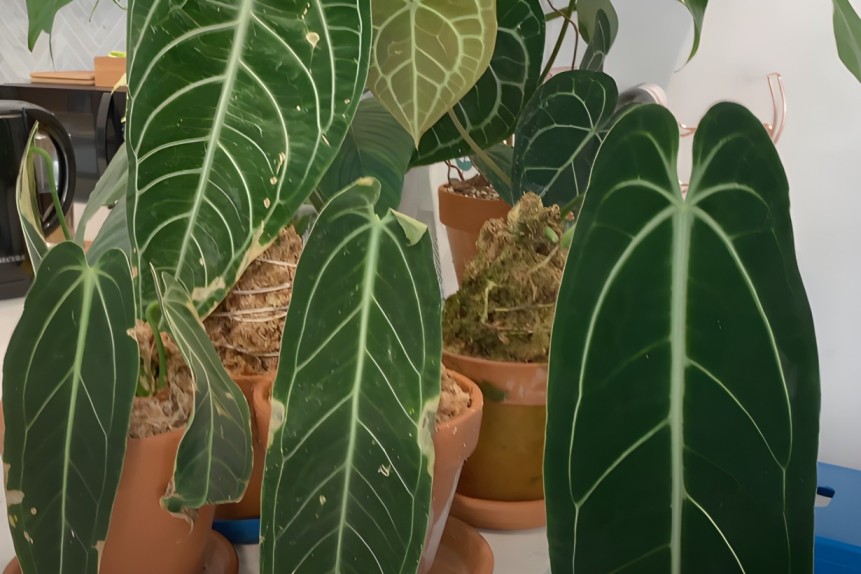
Appearance and Fragrance
With its striking foliage and regal presence, the Anthurium-Warocqueanum is nicknamed the Queen Anthurium. Imagine:
- Rich, velvety leaves: Rich, deep emerald green leaves unfurl, boasting a velvety texture and a lush, heart-shaped shape. They add visual depth to the beauty of the veins because they etch intricate patterns.
- There is a delicate fragrance associated with the Queen Anthurium, though it is not its most prominent feature. Adding a touch of sensory delight to its visual splendor is a soft, sweet scent, reminiscent of lilies or jasmine.
Underwatering And Overwatering
Underwatering can lead to
- Waterlogged foliage is characterized by drooping and limp leaves.
- Leaves with crisp edges indicate that there is insufficient moisture in the leaves.
- It is impossible for a plant to reach its full potential if it is not adequately hydrated.
Overwatering is equally detrimental
- Leaf yellowing results from suffocating soil and stagnant water, which suffocate the roots.
- The appearance of brown spots can be caused by waterlogged soil, which can be infected with fungi.
- Plants are eventually killed by root rot, a condition affecting their roots.
So, how do we strike the perfect balance? Here are some tips:
Make sure the soil is moist by feeling it. Before watering, always check the top inch of the soil. If it’s dry, your Queen is thirsty!
Make sure the soil is deep soaked when watering, so that the water runs out the drainage holes.
Dry the soil between waterings: Root rot can be prevented by letting the soil dry out slightly between waterings.
Take humidity into consideration: Queen Anthuriums grow best in humid conditions. Humidifiers and pebble trays can help humidify your home if it’s dry.
Rearrange your watering schedule: Changing seasons will require adjusting your watering schedule. During the summer months, water more frequently, while during the winter months, water less frequently.
Overwintering
Make sure your Queen Anthurium does not suffer as the chill sets in. Winter is a particularly challenging time for this tropical beauty. Here’s how to keep her thriving:
Warmth: Aim for temperatures between 65 and 85 degrees Fahrenheit. A sunny window or a warm room like a bathroom might be a good choice.
Create a rainforest-like atmosphere by mimicking humidity! In order to increase humidity, you can use a humidifier, a pebble tray, or group plants together.
Watering: Reduce watering as growth slows. The top soil should be allowed to dry out a little before you water it again.
It’s time for your Queen to take a break! Fertilizer: Let her rest! Winter is not the time to fertilize.The light should be bright and indirect. Sunlight that can burn leaves in the afternoon should be avoided.
Why is my anthurium warocqueanum yellow?
- In Queen Anthurium, excessive watering may cause yellowing. Water the soil less frequently between waterings, ensuring it drains well.
- Yellow leaves can be caused by waterlogged roots due to poor drainage. If you want to prevent water accumulation from accumulating on your Anthurium, you should repot it in a well-draining soil.
- It is also possible for yellowing to occur due to inadequate lighting. If you want to maintain a lush green color on your Anthurium, place it in a light place with indirect, bright light.
- Deficiency in nutrients: Yellowing might be caused by an insufficient supply of nutrients.
Common Pests and Diseases
Let’s explore some common threats and how to keep your Anthurium thriving.
Pests
- Spider mites: Sucking sap from leaves, these tiny arachnids cause yellow stripes and webbing on leaves.
- Mealybugs: Leaving sticky honeydew, these fluffy white bugs cause mold to grow and the plant to weaken.
- Scales: Plant growth is stunted and leaves yellow due to these armored insects sucking sap.
- Thrips: Silver streaks and scarring are caused by these tiny, winged insects.
Diseases
- Root Rot: Poor drainage and overwatering lead to fungus pathogens attacking roots, causing wilting and yellowing leaves.
- Bacterial Blight: Brown spots and lesions appear on the leaves of plants infected with this bacteria.
- Mosaic Virus: Due to this viral disease, the plant produces fewer flowers and its leaves become distorted and mottled.
Prevention and Treatment
- Early detection is crucial when it comes to regular inspections. Pests and diseases should be inspected regularly on your plants.
- Make sure the soil is well-draining, that indirect sunlight is bright, and that the plants are watered appropriately in order to ensure good growth.
- Insecticides such as neem oil are effective in controlling various pests naturally.
- Using a fungicide in accordance with the instructions is ideal for treating fungal diseases.
- Prevent the spread of diseases and pests by quarantining new plants before adding them to your collection.
Problems and Solutions

Problem: Yellowing Leaves
Have you noticed yellow leaves on your Anthurium-Warocqueanum? Overwatering is often the cause of this problem. Allow the soil to dry between waterings and ensure proper drainage.
Problem: Stunted Growth and Slow Development
Stunted growth? You may need to provide more light for your Queen Anthurium. It will grow faster if you place it in a bright, indirect light spot, however be sure to protect it from harsh sunlight.
Problem: Not Blooming
Yearning for those vibrant blooms? Light conditions should be checked. It is possible to hinder flowering if there is insufficient light. Watch your plant blossom in all its regal splendor when you move it to a brighter place.
Problem: Pests Invading Your Queen Anthurium
Pests bugging your Anthurium? With neem oil, you can say goodbye to them. To deter pests without harming your majestic Anthurium, mix neem oil with water and spray on your plant.
Problem: Soil Compaction and Poor Drainage
Do you have compacted soil affecting your Anthurium-Warocqueanum? You can rejuvenate its roots by repotting it in soil that drains well. To ensure a healthy and thriving plant, make sure the pot is equipped with drainage holes.
Problem: Fertilizer Burn on Queen Anthurium
Are fertilizer burns damaging leaves? Fertilizer should be diluted and applied sparingly. You can harm your Anthurium if you feed it too much; a balanced feeding schedule is essential.
Problem: Succumbing to Low Humidity
Combatting low humidity issues? Humidity increases when plants are grouped together. If you want to create a more favorable environment for your Anthurium, use a humidifier or a water tray.
Problem: Overexposure to Direct Sunlight
Are you getting too much sun on your Anthurium-Warocqueanum? During peak hours, keep it out of direct sunlight. To prevent leaf burn, use indirect or filtered light.
Problem: Leaves Developing Brown Edges
Have you noticed brown edges on the leaves of your Anthurium? Ensure that the moisture level in your garden stays consistent by adjusting your watering routine. Browning can occur in soil that is too dry or too wet.
Toxicity
The Queen Anthurium has vibrant flowers and lush foliage. In spite of its captivating nature, it’s important to remember its dark side: toxicity.
Humans and pets are both at risk from calcium oxalate crystals found in all parts of this plant. It is possible to experience oral irritation, swelling, nausea, and vomiting after ingesting.
It is possible for breathing problems and even death to occur in severe cases.Humans are generally not at risk from these hazards. A sensitive stomach is particularly vulnerable in children and adults.
A pet’s health is at risk, especially a dog or a cat. Poisoning is more likely to occur as a result of their inquisitive nature and tendency to chew on plants.
Here’s how to stay safe
- Do not let children or pets have access to Queen Anthurium.
- Plants should be handled with caution. Touching it should be followed by thorough hand washing.
- A veterinarian or your doctor should be contacted as soon as possible if you suspect poisoning.
Varieties/Types
Anthurium-Warocqueanum x Silver Blush: Imagining a regal green
Many common names are given to Queen Anthurium, including Queen Anthurium, Velvet Anthurium, and Leatherleaf Anthurium.
blended with a delicate blush of silver. A masterpiece, this hybrid variety adds elegance and uniqueness to your indoor garden.
Anthurium-Warocqueanum x Waterburyanum: A Waterburyanum hybrid is a must-have for those seeking captivating foliage. This Anthurium is a true botanical marvel that combines the best of both worlds.
Anthurium-Warocqueanum Dark Knight: Discover the mystique of the Dark Knight variety of this plant. You can turn your Anthurium into a captivating centerpiece with its dark and dramatic appearance.
Anthurium-Warocqueanum Dark Narrow Form: The slender, dark leaves of this variety add a level of sophistication. Plant connoisseurs will appreciate the narrow form that adds a touch of refinement.
Uses
Interior Décor Darling
- Any space becomes a botanical oasis when this plant vibrant foliage is present. You will be able to add a stylish touch to your interior décor with its captivating presence.
Air Purifier Extraordinaire
- There’s more to this majestic plant than just its beauty. It’s an air purifier as well. Among other benefits, Anthurium-Warocqueanum filters out common pollutants, thereby improving indoor air quality.
Mood-Boosting Companion
- Take care of Anthurium plant and experience its joy. Your home becomes a haven of happiness when it is surrounded by it, uplifting moods and creating a positive atmosphere.
Unique Gift of Elegance
- Looking for a distinctive gift? You can’t go wrong with this plant. Make special occasions even more special by sharing this regal plant with loved ones and friends.
Office Desk Marvel
- The sophisticated charm of Queen Anthurium will add a touch of class to your workspace. Adding a touch of greenery to your office desk is easy with its low-maintenance nature.
Conversation Starter
- As a result of its captivating foliage and unique varieties, Anthurium-Warocqueanum becomes a conversation piece. This exotic plant features regal beauty and interesting features that will impress your guests.
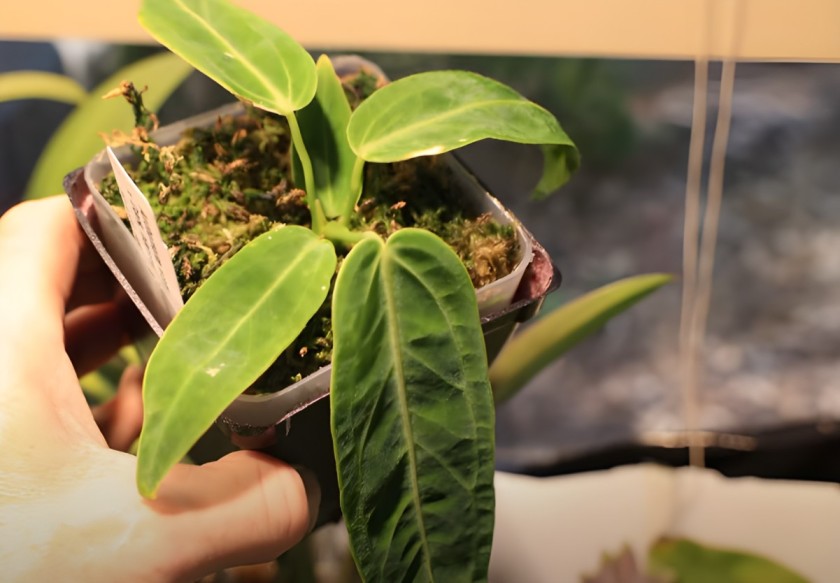
Cultivation Essentials: Nurturing Queen Anthurium
Queen of anthuriums, captivates enthusiasts with its unique characteristics and captivating appearance. Caring for an Queen Anthurium requires a delicate balance of factors, from providing the best soil and fertilizer to maintaining optimal light conditions.
Acclimating Anthurium-Warocqueanum to its environment is a crucial step, ensuring the plant thrives and displays its vibrant foliage. Propagation and growth play a pivotal role in expanding this plant community, with techniques like tissue culture and rapid propagation offering efficient methods for enthusiasts.
Understanding the growth rate, cutting procedures, and effective propagation practices becomes essential for those seeking to propagate this majestic plant successfully.
Global Market and Varietal Allure: Buying and Collecting Anthurium Warocqueanum
Buying and selling Queen Anthurium has become a global pursuit, with enthusiasts seeking to add this regal plant to their collections. Whether it’s purchasing Queen Anthurium in Australia, the UK, or Canada, the market is diverse, catering to the growing demand for this unique species.
Varieties and hybridization further contribute to the allure of Queen Anthurium, with intriguing combinations like Anthurium-Warocqueanum x Silver Blush and Anthurium-Warocqueanum x Waterburyanum captivating collectors worldwide.
Care tips and guides, including recommendations for the best fertilizer and soil, add to the wealth of knowledge, making Anthurium-Warocqueanum not just a plant but a rewarding journey for enthusiasts.
Geographical information, specialized forms, and features, coupled with insights into potential issues like yellowing leaves, collectively contribute to a comprehensive understanding of Queen Anthurium, enriching the experience for both seasoned cultivators and newcomers to the world of exotic plants.
FAQs
Is Anthurium warocqueanum rare?
This is a relatively rare plant in the horticultural industry.
Are Anthurium warocqueanum hard to care for?
A moderately difficult plant to grow, this plant requires regular watering. A well-draining soil, high humidity, and indirect light are all essentials.
What is the name of the Anthurium warocqueanum?
Many common names are given to Anthurium warocqueanum, including Queen Anthurium, Velvet Anthurium, and Leatherleaf Anthurium.
What is the best substrate for Anthurium warocqueanum?
Perlite, or a mixture of orchid bark, sphagnum moss, and sphagnum moss, is the most suitable substrate for Anthurium warocqueanum.
Is Anthurium warocqueanum expensive?
Depending on its size and rarity, Queen Anthurium can be quite expensive. For around $50, you can find small plants, while larger, mature ones can cost as much as $1,000.
Is Anthurium warocqueanum pet friendly?
It is not safe for pets to consume Anthurium warocqueanum.
How often do you water a Warocqueanum?
Your Warocqueanum will require water only when the soil is dry to the top inch. You may need to water it less frequently during the winter.
What conditions do Anthurium warocqueanum like?
A warm, humid environment with indirect light is ideal for this plant. A temperature between 18 and 27 degrees Celsius (64 and 80 degrees Fahrenheit) and a humidity level above 60% are preferable.
Where do Anthurium warocqueanum grow?
A native of Colombia, Anthurium warocqueanum grows on rainforest canopy as an epiphyte.
How to grow Anthurium warocqueanum indoors?
Warm, humid, and indirect light are the best conditions for growing Queen Anthurium indoors. Make sure to water it only when the surface of the soil dries out, and to fertilize it monthly with a balanced fertilizer.
How to grow Anthurium warocqueanum outdoors?
A temperate, humid climate with well-draining soil and partial shade is ideal for growing Queen Anthurium outdoors.
How fast does Anthurium warocqueanum grow?
There are only a few new leaves added to Anthurium-warocqueanum each year as it grows slowly.
Why is my Anthurium warocqueanum drooping?
Drooping this plant can be caused by several factors. There are a variety of reasons for this, including underwatering, overwatering, lack of humidity, or too much direct sunlight.
Is Anthurium warocqueanum toxic to cats and dogs?
It is toxic to dogs and cats to consume this plant. Symptoms include vomiting, diarrhea, and drooling if your pet consumes any part of the plant.
Is Anthurium warocqueanum toxic to humans?
Although Queen Anthurium is not considered highly toxic to humans, when ingested, it can cause skin irritations and digestive problems. The sap of the plant should not be touched, and your hands should be thoroughly washed after handling it.


